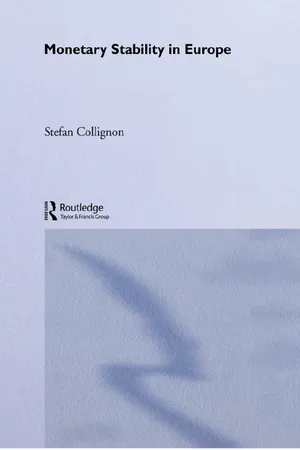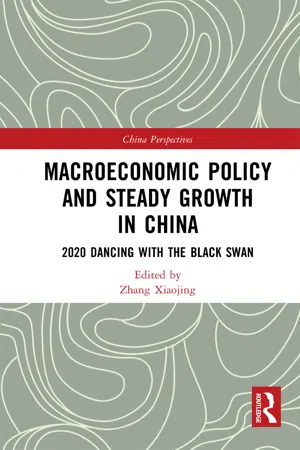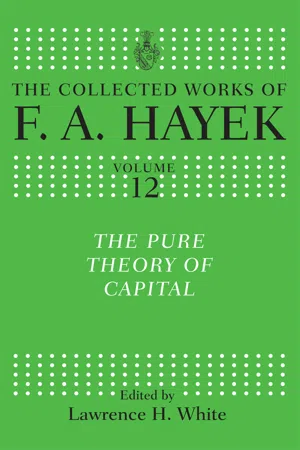Economics
Interest-rate Stability
Interest-rate stability refers to the consistency and predictability of interest rates over time. It is a desirable condition in an economy as it provides certainty for borrowers and lenders, encourages investment, and supports overall economic stability. Central banks and monetary authorities often play a key role in maintaining interest-rate stability through their monetary policy decisions.
Written by Perlego with AI-assistance
Related key terms
Related key terms
1 of 4
Related key terms
1 of 3
3 Key excerpts on "Interest-rate Stability"
- eBook - ePub
- Stefan Collignon(Author)
- 2003(Publication Date)
- Routledge(Publisher)
4 There is now an increasing awareness that the CPI overstates the true rate of increase of the cost of living. In the US, this measurement error may attain up to 2 per cent (Shapiro and Wilcox 1996). In Europe, newly constructed Harmonised Indices of Consumer Prices will be available from 1999 that are likely to correct some of these distortions (EMI 1996). However, there seems to be a consensus that recorded inflation rates around 2 per cent are close to price stability as this figure underlies most of the inflation targets by EU central banks.From a theoretical point of view, a more appropriate definition of price stability is that ‘expected changes in the average price level are small enough and gradual enough that they do not enter business or household decisions’ (Pemberton 1992).Source: Eurpoean Commission.Figure 7.1Convergence of infation rates (CPI annual percentage change).Source: European Commission.Figure 7.2Convergence of interest rates (long-term interest rates in per cent per annum).Therefore, monetary policy is more about containing dynamic price expectations than about eliminating all sources of potential inflationary shocks (McDonough 1997). It also must take a medium-term perspective as it takes time until expectations have entered behaviour or until they have died down. Estimating inflation expectations is a complex task. A range of indicators based on past price movements might be useful, but in any case monetary aggregates and interest rates also contain information.Our definition of price stability gives some substance to the distinction of will and capacity in central bank behaviour: monetary policy may not be able to control exogenous price level shocks, but it must have the will to bring down inflationary expectations after such shocks. This implies that policy must aim at a low, constant rate of expected inflation and not at a constant price level. However, if expectations are influenced by shocks to the price level, say because agents may not immediately distinguish between permanent and temporary inflation shocks, stabilising expectations requires that authorities reveal the time horizon over which they wish to see inflation return to stability. This can be done by publishing an explicit inflation target.5 - eBook - ePub
Macroeconomic Policy and Steady Growth in China
2020 Dancing with Black Swan
- Zhang Xiaojing, Zhang Xiaojing(Authors)
- 2021(Publication Date)
- Routledge(Publisher)
They question not only the ability of central banks to adjust the interest rate toward the equilibrium level, but also the very rationale of the so-called equilibrium interest rate itself. They point out that, when the inflation indicator is no longer sensitive, there is no longer a basis for central banks’ adjustment of interest rate. They further point out sharply that the logic of the secular stagnation theory is flawed: if low equilibrium interest rate leads to financial instability, is this instability-causing interest rate really an “equilibrium” interest rate? 20 That is to say, is the combination of high debt and low interest stable and consistent? The financial cycle theory argues that monetary policy and financial cycle should be taken into consideration in the determination of the equilibrium interest rate. 21 A lot of empirical research shows that, compared with inflation, credit and asset prices contain more information about future output. This means that we need to incorporate the financial cycle, and not just inflation, into monetary policy targets. Otherwise, as many research point out, monetary policy will add to financial instability by encouraging the accumulation of financial vulnerabilities, and then add to the downward risk of the real economy in the future. Borio et al. discovered that the “finance-neutral” equilibrium interest rate, which takes the financial cycle into account, is higher than the traditional equilibrium. And the current low interest rate can be more attributed to the accumulation of ill-advised monetary policies in the past. 22 Central banks face a trade-off between short-term and long-term output. A higher policy rate facilitates a strong financial sector and ensures long-term economic development and stability at the price of higher cost of funding for banks and lower short-term economic activity - eBook - ePub
- F. A. Hayek, Lawrence H. White, Lawrence H. White(Authors)
- 2019(Publication Date)
- Routledge(Publisher)
A. Hahn 10 and J. M. Keynes, of regarding the rate of interest as being solely dependent on the quantity of money and the varying desires of people to keep certain balances of money in hand. We are here not primarily concerned with the transitory or purely dynamic effects of monetary changes on the rate of interest. But if it is true—as we must assume in the light of all evidence—that changes in the quantity of money affect the rate of interest, there must exist, even in equilibrium conditions, some relationship between the quantity of money people want to hold and the rate of interest. It is this relationship which we must first try to elucidate. Extension of Concept of Equilibrium Used Now, as has been pointed out in an earlier chapter, 11 the desire of people to hold money cannot readily be fitted into the rigid definition of equilibrium we have used up to this point. At least, in an economy in which people were absolutely certain about the future, there would be no need to hold any money beyond the comparatively small quantities necessitated by the discontinuity of transactions and the inconvenience and cost of investing such small amounts for very short periods. But the assumption of certainty about the more distant future, although we have so far based our argument on it, is not really essential for our concept of equilibrium. The plans of the various individuals may be compatible with the extent to which they are definite, 12 and yet the individuals may at the same time be uncertain about what will happen after a certain date and may wish to keep some general reserve against whatever may happen in that more uncertain future
Index pages curate the most relevant extracts from our library of academic textbooks. They’ve been created using an in-house natural language model (NLM), each adding context and meaning to key research topics.
Explore more topic indexes
Explore more topic indexes
1 of 6
Explore more topic indexes
1 of 4


